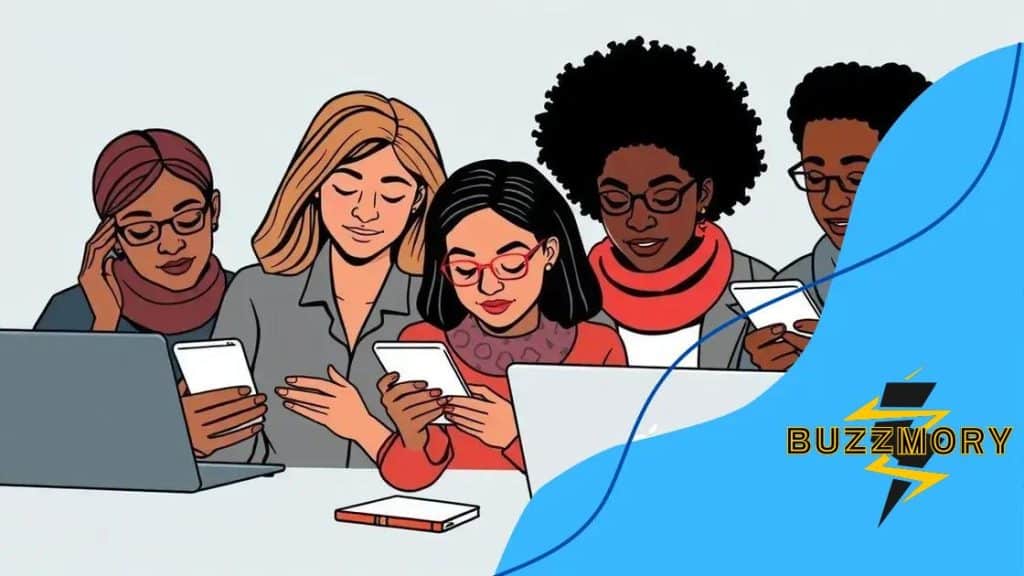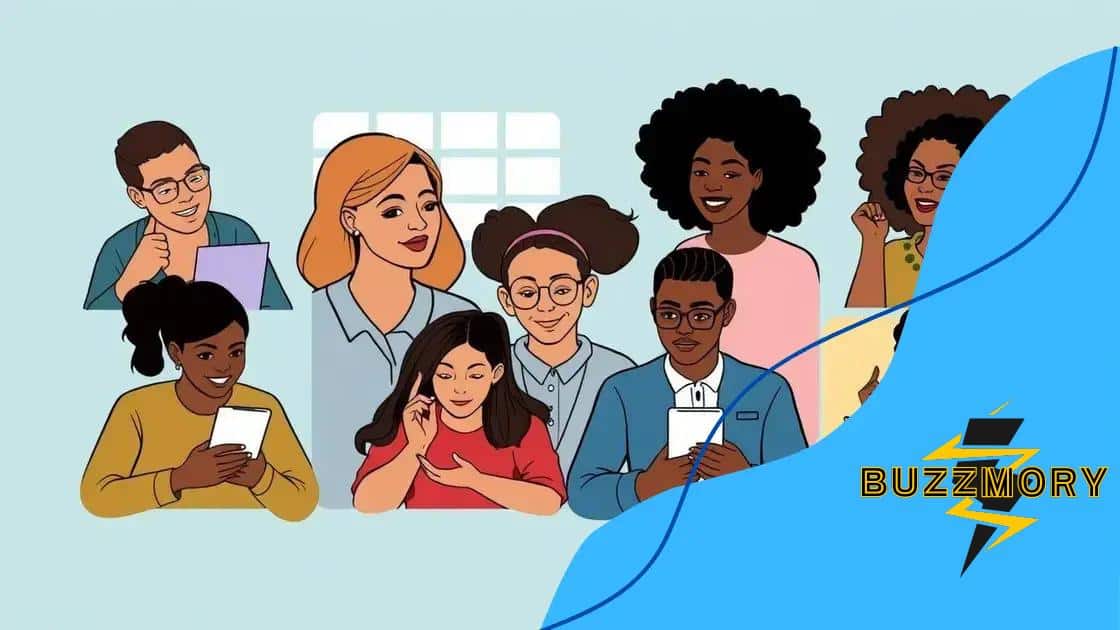How digital platforms are driving political and social change

Digital platforms are driving political and social change by enabling global connectivity, empowering grassroots movements, and leveraging technology to mobilize supporters for meaningful activism, while also facing challenges like misinformation and censorship.
How digital platforms are driving political and social change is an undeniable force in today’s world. From social media campaigns that unite voices to tools that facilitate engagement, these platforms are shaping our society in profound ways. Curious to explore how they impact movements?
The role of social media in activism
Social media plays a crucial role in activism today. Platforms like Twitter, Facebook, and Instagram have given activists the ability to share their messages widely, connect with supporters, and organize events. Through these digital spaces, people can mobilize quickly and effectively around social issues.
Connecting communities
One significant aspect of social media in activism is its ability to connect diverse communities. Activists can reach a variety of audiences, transcending geographical barriers. This connectivity fosters collaboration and solidarity among individuals and groups fighting for similar causes.
Mobilizing movements
Social media has revolutionized how movements gain momentum. By sharing posts, hashtags, and live updates, activists inspire others to join their causes. The impact is profound:
- Immediate dissemination of information about events and initiatives
- Increased visibility for marginalized voices
- Empowerment of individuals to take action
- Quick response to social injustices
Moreover, social media platforms allow for real-time updates, ensuring that followers stay engaged and informed. For instance, during protests, people share live videos and updates, creating a shared experience for those who cannot attend in person. This shared experience draws attention to the cause, encouraging others to participate.
Challenges faced by activists
While social media offers many benefits, it also presents challenges. Activists may encounter misinformation, online harassment, or censorship. These obstacles can hinder their efforts and discourage participation. However, by creating supportive online communities, activists can combat these issues together.
In conclusion, the role of social media in activism is dynamic and multifaceted. It not only amplifies voices but also fosters connections and mobilizes groups around important causes. By leveraging these platforms effectively, activists can create meaningful change in society.
Digital tools fostering political engagement
Digital tools have become essential for fostering political engagement in today’s world. These resources empower individuals to connect with their government and participate in the democratic process. By utilizing various platforms, citizens can voice their opinions and advocate for change.
Online petitions and fundraising
One significant digital tool is the online petition platform. These sites allow users to create and sign petitions that promote causes they care about. As a result, online petitions provide:
- An easy way to gather support for important issues
- Opportunities for voices to be heard without geographical limits
- The ability to raise funds for campaigns and grassroots initiatives
- Simple sharing options to spread awareness quickly
Online fundraising platforms are also critical for supporting political candidates and movements. These tools enable individuals to contribute money easily, helping candidates gain the resources needed to reach voters.
Social media engagement
Social media interactions are vital in encouraging political dialogue. Users can share opinions, debate issues, and follow political leaders through their accounts. This interaction fosters a culture of engagement and can lead to:
- Increased awareness of political issues
- Real-time feedback on policies and decisions
- Community building around shared interests and concerns
- Mobilization of supporters for events and initiatives
Digital tools, such as town hall platforms and virtual meeting software, also facilitate interaction between representatives and constituents. These platforms allow for direct communication, enabling voters to ask questions and receive immediate responses.
In essence, digital tools are transforming the landscape of political engagement. They empower citizens to take an active role in their government, encouraging participation in the democratic process in innovative ways. By connecting individuals to their representatives and providing outlets for advocacy, these tools play a crucial role in shaping political discourse.
Case studies of successful online movements

Case studies of successful online movements reveal the power of digital platforms in creating meaningful change. By examining these examples, we can understand how social media and websites have mobilized communities around important causes. These movements often begin with a simple idea or a single post that resonates widely.
Example 1: The Ice Bucket Challenge
One of the most famous online movements was the Ice Bucket Challenge. It started as a fun challenge but quickly turned into a global effort to raise awareness for ALS. Participants poured a bucket of ice water over themselves and nominated others to do the same, while also donating to the ALS Association. This movement raised over $115 million in just a few months.
Example 2: #MeToo Movement
The #MeToo movement gained traction on social media, empowering individuals to share their stories of sexual harassment and assault. It began as a simple hashtag but grew into a worldwide phenomenon. This movement led to increased awareness and discussions about accountability in workplaces, sparking legislative changes in various regions.
- Encouraged countless people to share their experiences
- Created a supportive community for survivors
- Shone a light on systemic issues in many industries
The success of these movements can be attributed to their ability to connect individuals around a common goal. They showed how someone’s personal story could spark a global conversation. The viral nature of social media allowed for rapid spread, reaching millions in a short time.
Example 3: Black Lives Matter
The Black Lives Matter movement started as a response to police violence against Black individuals. Through organizing online, activists were able to mobilize protests and create awareness for racial injustice. The movement utilized hashtags and social media campaigns to spread its message effectively.
It has led to significant changes in policy and has influenced discussions on race and policing in many countries. The success of such movements emphasizes the power of digital tools in fostering activism.
Studying these successful online movements helps us understand the potential for digital platforms to affect social and political change. Each case shows how engaging storytelling and community participation can lead to substantial change.
Challenges faced by digital platforms in activism
Digital platforms play a vital role in activism, but they also face significant challenges. These challenges can hinder the effectiveness of movements and create barriers for activists striving for change. Understanding these obstacles is essential to navigate the online landscape more effectively.
Misinformation and Disinformation
One major challenge is the spread of misinformation and disinformation. False information can spread quickly on social media, confusing supporters and undermining the goals of movements. Activists must work hard to combat these false narratives, often wasting valuable time and resources.
Online Harassment
Activists, especially those from marginalized communities, often face online harassment. This bullying can be daunting and discouraging, leading some individuals to silence their voices. Online threats can impact not only personal well-being but also the broader movement when key leaders withdraw.
- Intimidation tactics can silence important conversations.
- Victims of harassment may hesitate to engage online.
- Harassment can discourage new activists from joining causes.
Additionally, the presence of trolls and antagonistic users can disrupt conversations and divert attention from essential issues. This hostile environment can demoralize community members and make it challenging to sustain momentum.
Censorship and Platform Policies
Tightening censorship measures and inconsistent platform policies can also stifle activism. Social media networks frequently change their rules, which can lead to the removal of critical content. Activists may find their posts flagged or deleted, resulting in reduced visibility for their causes.
Each platform has different guidelines, which can create confusion. Activists must stay informed about these rules and adapt their strategies accordingly. This complexity adds another layer of effort to their already demanding work.
By recognizing these challenges, activists can better prepare for potential obstacles that digital platforms present. Addressing these issues thoughtfully will help movements strengthen their impact and promote lasting change within society.
The future of digital activism
The future of digital activism looks promising, with continuous advancements in technology shaping how movements develop and gain traction. As more people connect online, the potential for change becomes even greater. Digital activism will evolve with trends in social media, communication tools, and emerging technologies.
Increased Use of AI and Data Analytics
One significant shift will be the increased use of artificial intelligence (AI) and data analytics. Activists will leverage these technologies to analyze social media trends, understand public sentiment, and target their messaging effectively. This data can help organizations craft focused campaigns that resonate with their audience.
Greater Accessibility and Global Engagement
The accessibility of digital tools will continue to grow, allowing more people from diverse backgrounds to participate in activism. With smartphones and internet access becoming more widespread, individuals in remote areas can join global conversations. This increased connectivity fosters solidarity and amplifies voices traditionally left out of the discussion.
- More grassroots movements can emerge from anywhere.
- Global coalitions will form around shared issues.
- Activists can collaborate across borders more easily.
Furthermore, innovations in technology, such as virtual reality (VR) and augmented reality (AR), could create immersive experiences that heighten awareness of social issues. These tools can help activists share powerful narratives, drawing people into the story in a way that simple text or images cannot achieve.
Adapting to New Challenges
As the landscape evolves, digital activists will face new challenges. Issues like increased censorship and the spread of misinformation will require quick adaptation and innovative strategies. Activists must develop new ways to engage audiences while combating potential roadblocks that threaten their initiatives.
Overall, the digital realm will become a vital space for activism, enabling broader participation and more impactful actions. Future digital movements will harness technology to inspire change, foster community engagement, and push for social justice like never before.
FAQ – Frequently Asked Questions about Digital Activism
What is digital activism?
Digital activism involves using online platforms and tools to advocate for social or political change.
How can social media help movements?
Social media allows movements to reach wider audiences, mobilize supporters quickly, and share important information.
What challenges do digital activists face?
Activists often encounter misinformation, online harassment, and censorship that can hinder their efforts.
What is the future of digital activism?
The future includes greater use of technology, increased engagement, and ongoing adaptation to new challenges.





